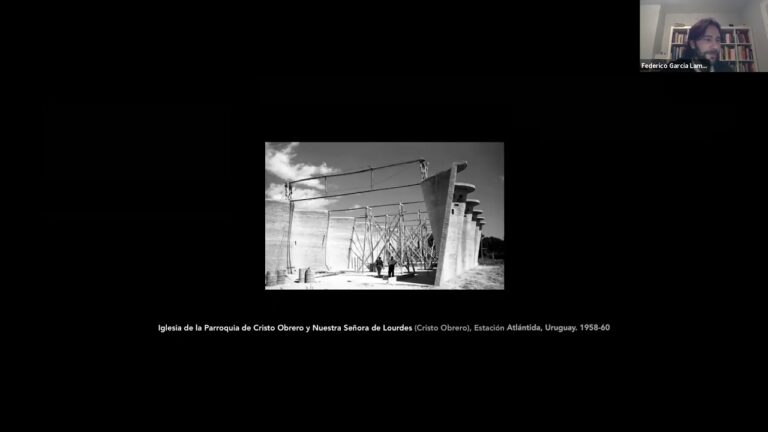
Economía Cósmica or “the profound order of the world”, as it was described by Eladio Dieste, was central to the late Uruguayan engineer’s structural innovations in Cerámica Armada or steel-reinforced structural ceramics. Dieste grounded the cosmic vastness of the world through the practical, on-site choreography of construction materials, and workers’ minds and bodies. This presentation and paper focus on a series of under examined documents associated with the construction of La Iglesia de Cristo Obrero (Cristo Obrero) in Atlántida, Uruguay. Archival construction photos, client notes, schedules, budgetary outlines and workers’ pay stubs expand the rhetoric of modernity and suggest a form of Cosmic Labor. As a non-standard collection, these documents link Dieste’s oeuvre to the immigrant-led Uruguayan workers movement of the early 1900s.
During the second half of the 20th century, Dieste and MontañezSA, the construction and engineering practice led by Dieste and his partner Eugenio Montañez, constructed approximately 1.5-million square meters of structural ceramics projects in Uruguay, Argentina, and Brazil. This high-volume production started in 1952 with Cristo Obrero, their first architectural commission. From 1958-60, the construction of this 500 sq. meter church, combined two structural innovations: Ruled Surfaces (walls) and Gaussian Vaults (roof). More importantly, Cristo Obrero connected the invention of construction mechanisms, like pre-tensioning devices and kinetic formwork with the agency of construction workers. Many of the relationships developed during the construction lasted for over three decades and defined the transfer of knowledge across dozens of projects.
The organisation of construction labor at Cristo Obrero is deeply linked to the legacy of Italian and Spanish immigration to Uruguay. In the first decades of the 20th century, European immigrants consolidated the Uruguayan workers’ movement and started the Federación Obrera Regional Uruguaya (Regional Uruguayan Workers Federation). Weaving the politics of construction around the notion of Economía Cósmica, Cristo Obrero was the first in a series of immigrant-led constructions to connect the workers movement to Eladio Dieste’s structural innovations in Cerámica Armada.
Federico García Lammers is an Associate Professor in the Department of Architecture (DoArch) at South Dakota State University, where he helped start the first professional architecture program in South Dakota. Before joining DoArch, he practiced architecture in Minneapolis, Portugal, and New York, designing and building large-scale projects on four continents. His scholarship on the Uruguayan engineer Eladio Dieste has been published and presented in a range of academic venues in South America, North America, and Europe. In March 2020, Federico received a national Practice and Leadership Teaching Award from the American Institute of Architects and the Association of Collegiate School of Architecture for inventing and directing the Forensics Studio at DoArch. Federico is also a co-director of LAB-OR, a design practice in Brookings, South Dakota.
source